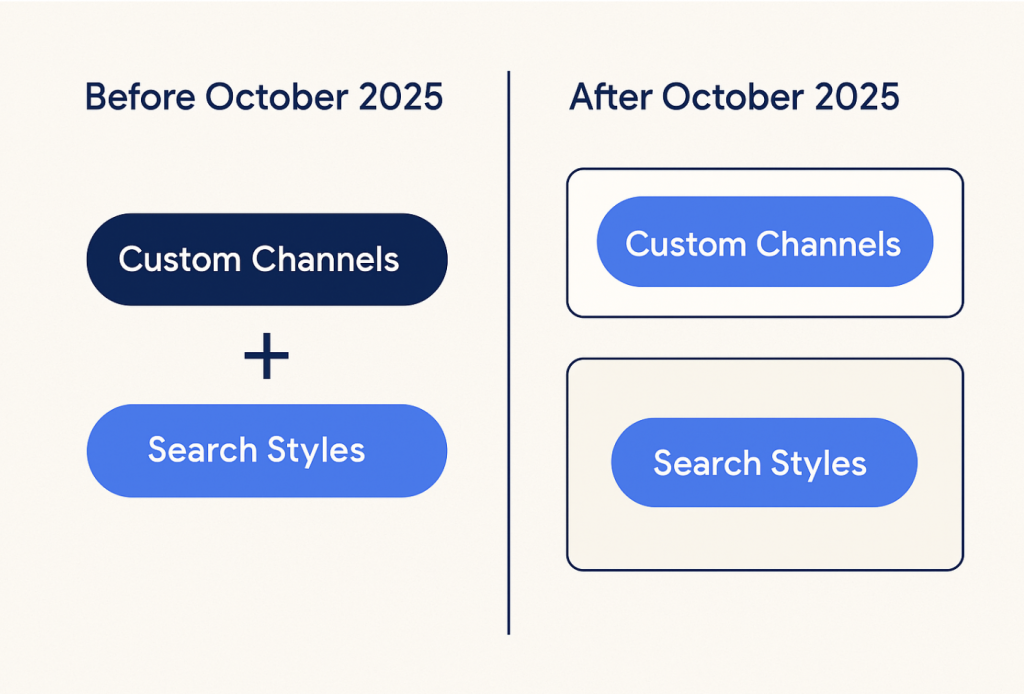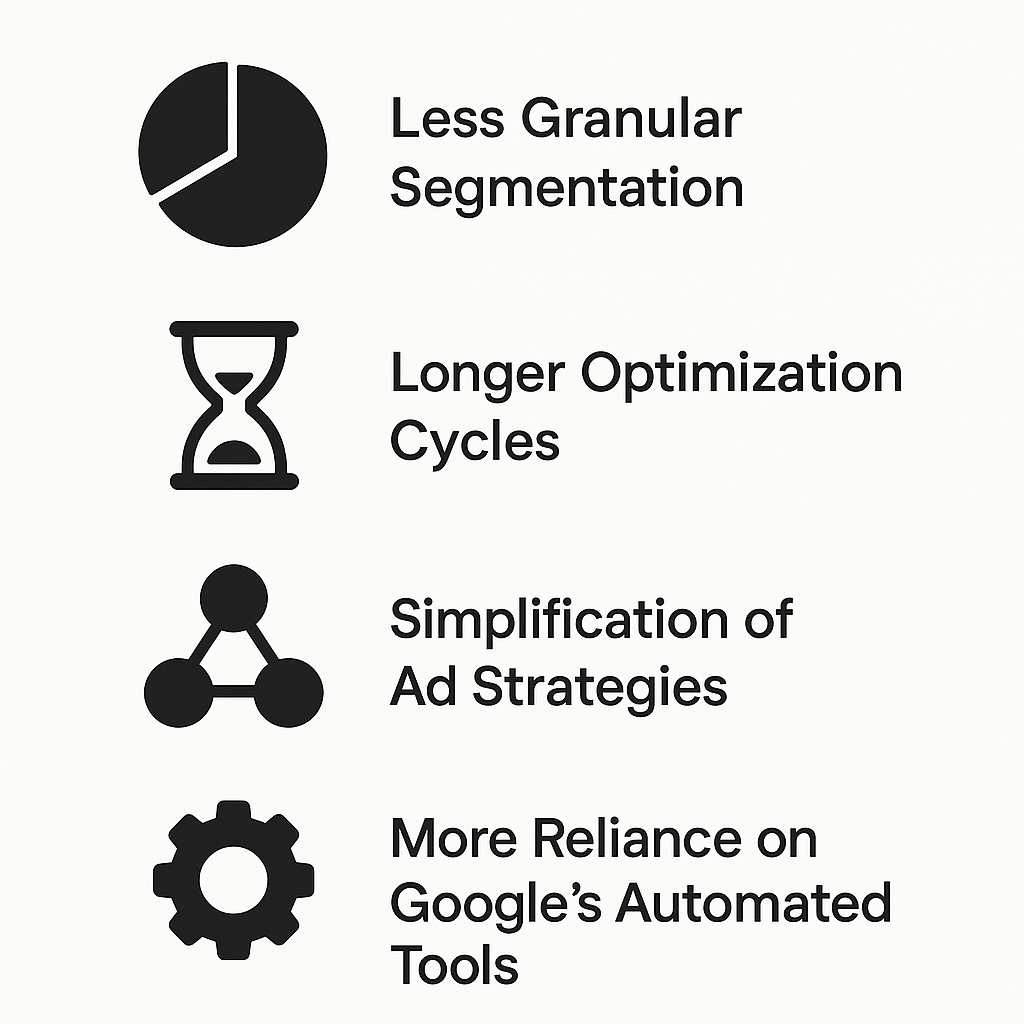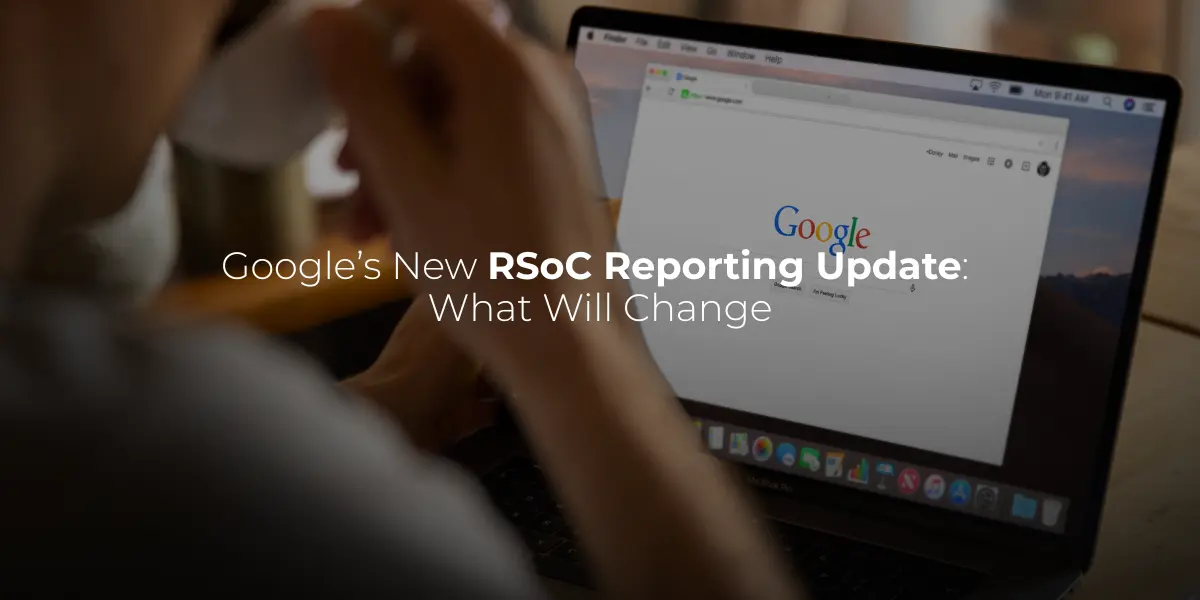
Google’s New RSoC Reporting Update: What Will Change
Starting October 7th, 2025, Google is introducing a major change in RSoC reporting.
The update affects a system stability issue that arose when advertisers combined “Custom Channels” and “Search Styles” in the same report.
From now on, it will no longer be compatible in both the AdSense UI and API. The update will be in effect starting from October 10th, 2025.
This move aims to create a more stable and safer reporting for all partners, but it also creates some difficulties for advertisers who rely on granular performance insights.
What’s Changing and Why It Matters
The Old Way
Advertisers and publishers could compare segment data by both Custom Channels and Search Styles.
This combination helped marketers identify the best-performing ad formats for each section of their site.
The New Way
Google has disabled this combination entirely:
- API: Any query combining both dimensions will fail
- UI: The AdSense reporting interface will block the selection of one if the other is already chosen.
- Saved Reports: Reports that used both dimensions will be modified, dropping one of the two.

Why Google Is Making the Change?
Google has two key reasons for this update:
- System Stability and Performance
Large, complex queries caused delays and instability in AdSense reporting. Removing the combination ensures faster and more accurate data delivery for all users. - Data Privacy and Threshold Enforcement
Combining sometimes allowed users to avoid Google’s minimum reporting threshold, a rule that hides very low metrics (fewer than 10 clicks per day) for privacy reasons.
Removing the ability to combine strengthens compliance with Google’s privacy and threshold policies.
What Does This Mean for Advertisers?
1. Less Granular Segmentation
Advertisers can no longer see how specific ad styles perform within individual channels in a single report.
This reduces visibility into micro-level performance patterns.
2. Longer Optimization Cycles
Without combined reporting, testing and optimization will take more time.
You’ll likely need to run multiple separate reports, compare datasets manually, or use external analytics tools.
3. Simplification of Ad Strategies
Since detailed segmentation is harder to measure, some publishers will consolidate their custom channels, like merging small sections into broader groups, and search styles – choosing one “universal” style instead of many.
This consolidation can improve data stability but may slightly reduce precision in revenue optimization.
4. More Reliance on Google’s Automated Tools
Advertisers who previously micromanaged ad placements might now rely more on Google’s optimization systems, like Auto Ads and machine learning–driven style selection.
That could simplify operations but limit manual control.

How to Adapt Your Reporting Strategy?
Even though combined reporting is gone, advertisers can still extract valuable insights using a few smart options:
Run Separate Reports
Generate two separate reports: one segmented by Custom Channel and one by Search Style. Upon that compare them manually.
Use Filters Instead of Dimensions – In the AdSense UI, apply one as a filter and use the other as a dimension.
Integrate With Google Analytics 4 (GA4)
By linking AdSense to GA4, you can analyze user behavior alongside ad revenue, even if AdSense itself no longer combines the data.
GA4 can help identify which content drives the best engagement and monetization.
Conduct A/B Tests
Assign different search styles to specific sections or time periods.
You’ll get clear before/after comparisons without relying on combined reporting.
Simplify Low-Volume Segments
If you have many small custom channels or styles that don’t hit the 10-click threshold, merge or retire them.
Focus your analysis on high-performing and statistically significant segments.

Industry and Monetization Implications
This update is part of a broader trend in digital advertising, a shift toward privacy importance.
Privacy Compliance
Google continues to tighten data exposure to align with GDPR and CCPA standards. Expect more summarized data across all ad products.
Rise of First-Party Analytics
As Google reduces reporting, advertisers are turning to analytics tools to regain deeper insight.
Platform Consolidation
Some advertisers may reach out to direct search feed providers offering more flexible analytics.
Others will double down on AdSense while building stronger in-house data pipelines.
Emphasis on Data Quality Over Quantity
By removing small, unstable data points, Google ensures more consistent reporting accuracy, forcing advertisers to focus on important metrics.
What’s Next for Advertisers
This change may feel restrictive, but it aligns with Google’s direction toward stable, safe, and quality-focused monetization.
Here’s how to stay ahead:
- Audit your existing AdSense reports and saved templates.
- Adjust any automation scripts using the AdSense API.
- Rebuild performance dashboards around single-dimension data.
- Consider integrating GA4 for richer behavioral analysis.
- Continue testing and iterating your ad formats systematically.
Final Thoughts
The RSoC reporting fix means Google is prioritizing data integrity and compliance over flexibility. Advertisers who adapt early and focus on reliable data sources will improve performance.
Yes, optimization will require a few more steps.
But by embracing smarter segmentation, you’ll continue to make data-driven decisions in a rapidly evolving ecosystem.
In short:
👉 Less raw data.
👉 More meaningful insights.
👉 A stronger, more compliant monetization future.
So, get ready for the upcoming changes, and make the most out of it!
